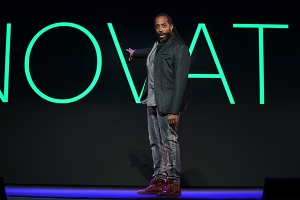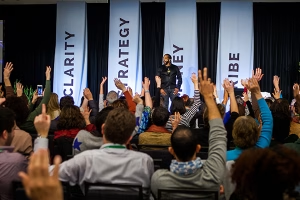When we wish to talk about race — that subject so urgent, so fraught, so alive — often we find ourselves stuck in defense and distance. We lean on data. We lean on policy. We lean on rhetoric. But what if we leaned on metaphor? What if we leaned on rhythm, on cadence, on the space between words?
That is the invitation in using poetry to lead conversations on race and culture.
The Power of Poetic Voice in Dialogue
Poetry offers something that argument can’t: resonance. A single image, a line broken across breath, can crack open hearts. As Sekou Andrews models, poetic voice is not a side act — it’s a leadership tool. It fuses emotional truth with intellectual clarity.
By leaning into metaphor, we give listeners permission to feel while thinking. We invite them inward.
When a leader recites or composes a poem at the start of a discussion on race, they’re not showing off — they’re setting tone: “Here is a space beyond right/wrong. Here is a space beyond blame/blessing. Here is a space for listening.”
Steps to Lead with Poetry in Race & Culture Conversations
- Start with your own internal poem. Before stepping into the room, craft a small poetic fragment (a line, a question, an image). Let it surface from your own bearing.
- Anchor the room with the poem. Read it (or invite someone to read) at the opening. Let silence follow it. Let people feel the “after” of the words.
- Use poetic prompts as bridge-builders. Ask: What image came alive for you? What line unsettles you? If this poem had a voice, what would it say to you?
- Layer with grounded conversation. After the poetic pause, step into structured dialogue: data, anecdotes, aspirational stories. But let the emotional entry point guide you.
- Close with a poetic turn. Return to the poem (or another) at the end. Let listeners carry it forward — not as rhetoric but as companion.
Why This Works for Culture & Equity
- Reduces defensiveness. Poetry does not demand that someone “prove” anything. It invites.
- Amplifies nuance. Metaphor holds paradox without needing resolution.
- Invites collective ownership. When people contribute to unpacking images or lines, the conversation becomes co-created.
- Anchors to identity. Poetry is rooted in voice — in culture. Using poetry acknowledges and honors that races and cultures have narrative, shape, and song.
Example Excerpt (Illustrative)
“I wear a color called ‘history’
stitched along my spine,
asking the world:
who raised you to see me?”
You place that in the room. Let it breathe. Then ask: what does “history” along the spine make you feel? What part of your own spine has memory you keep hidden?
Call to Leaders
If you are a leader, a facilitator, a community builder — I invite you to risk opening your mouth poetically. Not as performance, but as entry. Use poetry to lead conversations on race and culture not because it’s soft, but because it is radical. Because it is human. Because it can name what prose cannot.
We will shift not by only fighting injustice — we will also shift by making space for the unsayable, the ache, the unspoken. Let poetic voice be your lever.


